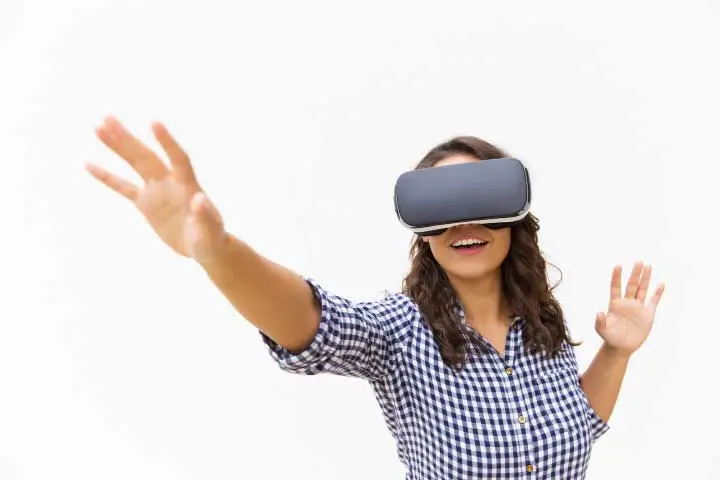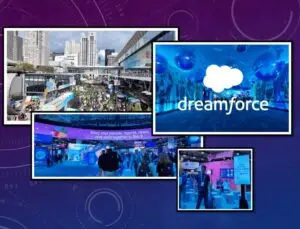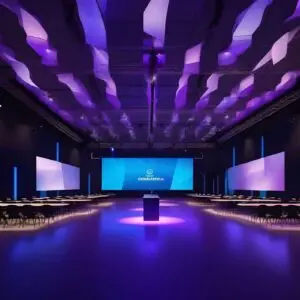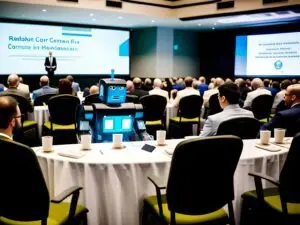The future came before us, and everything we had been doing in small steps, projecting and predicting the years to come. Now it has appeared to us like a giant wave to a small (but ambitious) fishing boat.
Those of us who spend our time thinking of new ideas for the future, preparing for those new opportunities that we will generate. Today it was our turn to sit down to work, not on ideas but on realities. One of them, the reality of the virtual event.
Something that just a few months ago were "futuristic" ideas of a few. Today it has become a necessity for many industries that cannot afford to lose the exposure of their brands, the transfer of knowledge and, of course, the interaction of your guilds, influencers and market participants in general.
In response to this need, new (and some experienced) virtual event solution providers have emerged. They promise to deliver a surreal experience to industry participants or sponsors, academia, and avid and curious spectators.
The decision to choose to make a virtual event is difficult and risky, but also innovative. Many factors must be evaluated, such as:
- What is the profile of our audience.
- What interactions are the most important for sponsors and visitors.
- How not to bore our users
- How to prevent our success from bringing down the virtual environment we created. With server or function crashes due to user saturation or data bottlenecks.
- Among thousands of other things that vary from event organizer to event organizer.
The decision despite being difficult is clear, either we go virtual or we do nothing, then we arrive at a dilemma. A dilemma that may be more difficult to solve than the original problem.
The dilemma: Make a game that simulates the event? or make a digital platform of the event?
Most of the solutions on the market focus on simulating the event by means of some kind of video game, where the physical environment is simulated to resemble as closely as possible the actual event. You can choose an avatar and dress it as you like, as well as move around the simulated convention center and its rooms with the arrow keys or the mouse. It is interesting and impressive but also somewhat boring, repetitive and limited. After all, it's not a fantasy game as it is. FIFA (where we can dream of being a professional soccer player) or like the SIMSwhere we play at life, work, get married, become millionaires, in a hyper-accelerated period of time.
In an event game, there is no real fantasy purpose as in any other video game. This makes "playing" no fun after a few minutes of exploring the convention center. Also, since the event should work for everyone, regardless of their "gamer" skills or the machine they run the program on, it really lags far behind any serious video game in graphics, features and performance. By the way, for millenials like me it is easy to "play" at the event, but for those older ones it can be a real problem, which can discourage them to stay at the event and avoid doing what is really important, interact.
Also, let's keep in mind that making a good video game requires high investments of money, time and creativity. At least if we are looking for it to really fit what we need or want.
We don't want our visitors to get bored too quickly or worse, to get desperate because they don't understand the dynamics of the event and decide to leave. Nor do we want the interactions The social, business and academic events have always been the objective of our events (whether face-to-face or virtual), but these have always been in the background.
So what other option do we have for our virtual event?
Before thinking about the options, let's notice a word that has appeared several times here. Especially in the last paragraph preceding this section: interaction. Yes, the interaction is the objective, let's not forget that even if the event is face-to-face, what we have sought to do is that people interact: with the advertising, with the commercial agents at the stands, with the speakers, colleagues, friends, etc.
With this in mind, now it is, what other choice do we have?
Let's think about how the greats of the virtual world (of the Internet) have solved it.
Amazon in its beginnings wanted to sell books online so that anyone in the world could see them, know them, compare them with each other and finally buy them. We could say that Amazon in its origins was a virtual bookstore. So we ask: did Amazon literally make a virtual bookstore, with its shelves of books, its librarian avatars and its cashiers to buy the chosen books? It's obvious to everyone, no, they didn't do that and although you could say it's because the technology of today didn't exist at the time, the truth is that they aren't doing it today either. Why not? Because the internet doesn't work like that, the fact of virtualizing something doesn't mean -necessarily- that we have to simulate it in its entirety.
What is simulated to the maximum extent possible, and as far as technology allows, are the interactions that people do in the physical equivalent. In a physical book store, people can see books, but also feel and smell them (something we cannot yet simulate virtually). They can compare books with each other to see which one catches their attention, they can eventually talk to a store representative to learn more about a certain author or find out where to find a certain collection. In the end, the main goal of the book store, whether physical or virtual, is the user buying the book after their entire decision process.
Amazon managed to simulate this process very well and did it so well that they became the largest Marketplace in history. Surpassing by many millions any book store chain. Of course, they had to leave aside some interesting things from the physical world like the smell of books or coffee in the sector, or those coincidences like meeting a friend or falling in love with another buyer. But at the end of the day, and the important thing here, is that the key to their success was to develop digitally those interactions that a bookstore requires to operate, giving virtually no importance to the physical simulation of the bookstore.
Is a virtual event something we can turn into a game?
 Is simulation technology actually advanced enough for any of our participants to "immerse" themselves in an augmented reality simulation of our event?
Is simulation technology actually advanced enough for any of our participants to "immerse" themselves in an augmented reality simulation of our event?
The answer is no, or rather, not yet. And until then, the way to make a true virtual event is far from video games or hyper-realistic simulation. The path is the one taken by Amazon, Fallabella.com, Tinder, Facebook, Zoom, among millions of other companies. Those who have developed platforms based on the actions and interactions of its users and not on the feeling of physically "being" somewhere.
Today, the virtual world works a certain way and, in the case of events, hyper-realistic simulation is definitely not the answer.
If you want to know how bmotik solved the challenge of making a virtual eventvisit: bmotik virtual events

















